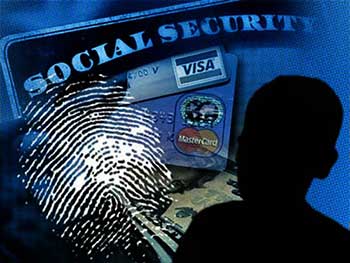A marketplace for stolen “digital fingerprints” has recently emerged, with research highlighting that criminals are selling comprehensive digital histories of more than 60,000 individuals. Identity theft has risen to nearly 500 victims a day in the UK and the fact that it is at its highest levels ever is proof that enterprises, organisations and institutions are unable to protect and secure their personally identifiable information. It has been argued that it won’t be long before Dark Web marketplaces emerge for actual fingerprints, iris, retina or facial scans and other static biometric data.
Once static biometric data falls into the hands of a cyber thief, it is visible forever and will continue to severely impact organisations or individuals, such as financial ramifications. What’s more, it’s costing financial industries, which have to pursue these fraudsters, billions of pounds, which is a major concern. There is no way of cancelling and reissuing a fingerprint, iris, retina, face, etc. This is a fundamental issue with the deployment of static biometric data for identity authentication purposes – with static biometrics, irrespective of which type of modality, your identity can, and eventually will, be stolen.
Fortunately there is a form of biometric that can be deployed today and is resilient to such “theft” – Voice Biometrics. Voice Biometrics is a strong, secure biometric that is inherently resistant to theft because it is not static, but is two-dimensional. Most voice biometrics technology can today detect replay attacks and synthetically generated speech, which further strengthens a voice biometric deployment. Therefore, this limits fraudsters’ ability to record a voice or try to artificially generate a specific individual’s voice print since this can be detected.
Voice biometrics has also introduced “liveness” to what is being said which completely negates any attempt to try to fool the voice biometrics system, taking into consideration the distinct characteristics that are unique to each individual. This includes pronunciation, speed of speech, accent, mouth and nasal passages.
Voice Biometrics is Omni-channel with one of its main benefits being that it is the only biometric modality that can be used across all customer facing channels: online, mobile, phone, contact centre, IVR, Intelligent Agents, Smart Home Assistants (e.g. Alexa) and IoT (device control). There are a number of different industries that are utilising voice biometrics, such as banks and call centres. By adopting this technology, these industries are able to save time and improve their customers experience.
Additionally, Voice Biometrics is able to deter and identify known fraudsters. When fraudsters are detected, call records can be used to create a profile of these voices which are then held on the system. Organisations are then able to create a database of these fraudsters and then use the voice biometric technology to examine callers. Subsequently, these people who are caught committing this crime will forever be locked out on the system.
Voice is both the oldest and newest user interface and customer engagement method, as well as the only effective IoT interface. It is becoming apparent that it is the most secure, highest common-factor identity authentication solution for today and the future. However, as fraudsters and hackers become more developed in committing these crimes and advancing the way they are doing this, businesses will need to increase their security and take extra precautions.
As time goes on, voice biometrics will continue evolving and helping combat the rise of stolen data and online identities and its ability to further prevent fraud, with it estimated that 90% of organisations will use voice biometric authentication by 2020.
The opinions expressed in this post belongs to the individual contributors and do not necessarily reflect the views of Information Security Buzz.



